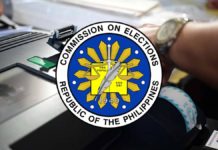BY RUBY SILUBRICO
ILOILO – Law enforcer or law breaker?
A policeman was arrested for using counterfeit money in Brgy. Poblacion, Oton town.
But according to PO1 Dennis Casiple of the 2nd Maneuver Platoon based in Brgy. Jibolo, Janiuay, he did not know that the P500 he paid was fake.
Casiple, together with his family and some relatives, were on their way to a resort in Guimbal town on Friday but dropped by the Oton public market to buy some food.
At the store of Leonely Escopido, Casiple paid P500 for the stuff he bought.
According to Senior Insp. Jigger Gemino, Oton police chief, as Casiple was returning to their vehicle, Escopido discovered that the P500 was not genuine.
The storeowner alerted the people around who in turn pounced on Casiple despite the policeman’s appeal to explain himself.
The people took Casiple – at that time in civilian clothes and not on duty – to the Oton police station.
Casiple’s immediate superior, Senior Insp. Charlie Sustento told Panay News his man was insisting on his innocence.
“He told me he did not know that his P500 was counterfeit. He would not have used it had he known it was not genuine, he stressed,” Sustento averred.
Sustento said he believed Casiple was telling the truth.
“Casiple’s family is well-off. I don’t believe he intentionally used that fake money to deceive others,” he stressed.
Sustento described Casiple as “a good police officer and dedicated to his work….He is a policemen and he knows that using fake money is illegal.”
Casiple failed to introduce himself as a policeman when people were attacking him, Sustento added.
BSP: KNOW YOUR MONEY
Meanwhile, the Bangko Sentral ng Pilipinas (BSP) urged the public to be familiar with the design, characteristics and distinct features of the Philippine peso banknotes in the new generation currency (NGC) series to avoid being potential victims of counterfeit currency.
Lowen Andrew Ligad, BSP-Iloilo senior research specialist, said banknotes in the NGC series contain upgraded security features as well as fresh and old design elements.
The banknotes are denominated in P20, P50, P100, P200, P500 and P1000.
“The currency notes and coins issued by BSP continually circulate or change hands. The public generally accepts and passes them on as legal tender, without full knowledge if the currency is genuine,” Ligad said.
In the new P500 bill, the added icon is former President Corazon Aquino beside her husband, former senator Benigno Aquino Jr.
Benigno Aquino’s appearance is no longer that of a “thinker” with one hand on his chin.
The portrait shows both Aquinos smiling.
Also on the P500 bill, one of the security features is embossed prints “Republika Ng Pilipinas” and “Limandaang Piso” that feel rough to the touch and the portrait, signatures and value panels on the face of the note.
The serial number is alphanumeric composed of one or two prefix letters and six to seven asymmetric digits, which are increasing in size, located at the lower left and upper right corners of the face of the note.
There are red and blue visible fibers embedded randomly on the paper if one is to inspect the security fibers.
The watermark is the shadow image of the portrait and the numeral “500” appearing at the blank space when the note is viewed against the light from either side.
The P500 bill also contains see-through mark of the word “Pilipino” written in Baybayin or the pre-Spanish Philippine alphabet seen in complete form when the note is viewed against the light.
Ligad said the P500 and P1,000 banknotes in the NGC series also contain Optically Variable Device (OVD) patch.
The OVD is the reflective foil that bears the image of the Blue-Naped Parrot for the P500 bill and the South Sea Pearl inside an oyster for the P1,000 bill and a small BSP logo.
“The background and the parrot / oyster change color when the note is rotated at 90 degrees. For example, the red parrot or oyster becomes green while the green background becomes red,” he explained. (With a report from the Philippine Information Agency-Iloilo/PN)







